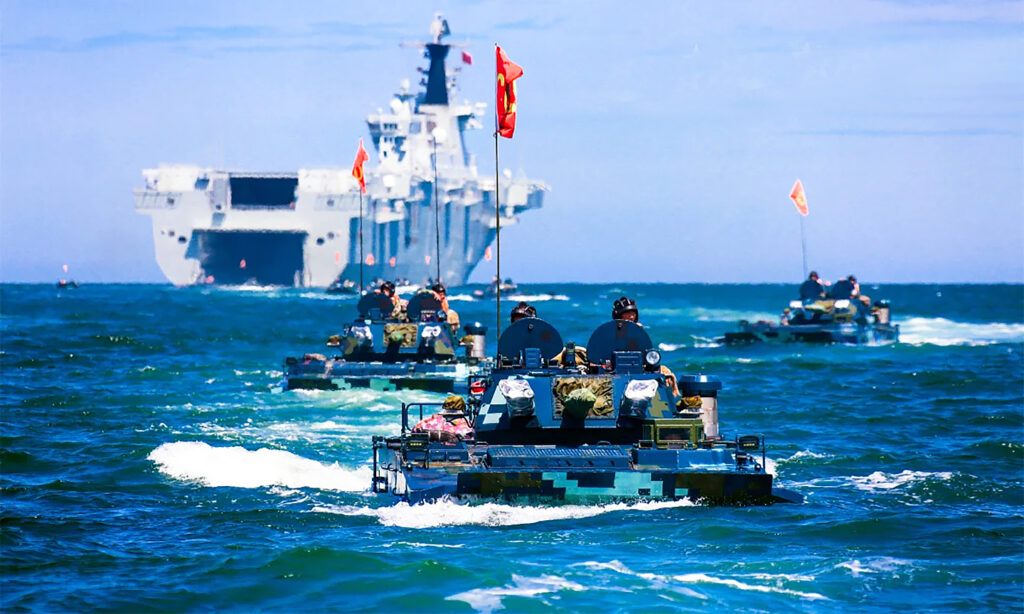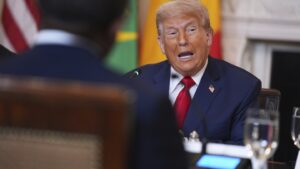
As geopolitical tensions rise, the burgeoning alliance between Beijing and Moscow is raising questions about the potential impact on U.S. efforts to defend Taiwan. With China ramping up pressure on Taiwan, NATO Secretary General Mark Rutte has suggested that cooperation between China and Russia could be significant if China opts to invade the island. Rutte’s comments highlight a growing concern about the shifting balance of global power.
“There’s an increasing realization, and let’s not be naïve about this: If Xi Jinping would attack Taiwan, he would first make sure that he makes a call to his very junior partner in all of this, Vladimir Vladimirovich Putin, residing in Moscow, and telling him, ‘Hey, I’m going to do this, and I need you to keep them busy in Europe by attacking NATO territory,’” Rutte told The New York Times on July 5. This statement underscores the potential for a coordinated strategy that could stretch U.S. military resources thin.
China and Russia: A Strategic Partnership
The relationship between China and Russia has been described as one of convenience, driven by a mutual desire to challenge the existing global order. This partnership is not without tangible benefits for both nations. For instance, China has been supplying Russia with components for its military operations in Ukraine. Ukrainian intelligence recently reported that Russian drones, such as the Geran-2, contain up to 65% Chinese parts, making them more formidable.
“Russian ‘Shahed’ drones already contain up to 65% of Chinese electronics,” according to Ukrainian intelligence reports.
This support not only bolsters Russia’s military capabilities but also strengthens the ties between the two nations, potentially complicating U.S. defense strategies in Asia.
Military Pressure on Taiwan
Meanwhile, China’s military activities around Taiwan have intensified. Adm. Samuel Paparo, commander of U.S. Indo-Pacific Command, has noted a 300% annual increase in Chinese military pressure on Taiwan. This escalation aligns with President Xi Jinping’s goal for the People’s Liberation Army to be ready to take Taiwan by force by 2027.
However, the feasibility of a coordinated attack involving Russia remains uncertain. Lt. Gen. Kyrylo Budanov, head of Ukraine’s Defense Intelligence Directorate, expressed skepticism about Russia’s current ability to engage NATO militarily, given its ongoing struggles in Ukraine. “Not now, it’s absolutely impossible,” he stated, though he acknowledged that future possibilities cannot be ruled out.
Potential Timelines and Strategic Assessments
The timeline for a potential Russian attack on NATO, as suggested by Rutte and other military officials, aligns with U.S. assessments of when China might be ready to invade Taiwan. U.S. officials have previously indicated that China could be prepared for such an action by 2027. This timeline is often referred to as the ‘Davidson window,’ named after former U.S. INDOPACOM commander Adm. Phil Davidson.
“President Xi has instructed the PLA to be ready by 2027 to invade Taiwan,” stated then-CIA Director Bill Burns.
Despite these assessments, the U.S. faces significant challenges in reallocating its military focus to Asia. Ongoing commitments in the Middle East and support for Ukraine have stretched American military resources thin. Recent actions, such as Operation Midnight Hammer against Iranian nuclear facilities, illustrate the complex web of global military engagements that the U.S. is currently navigating.
Implications for U.S. Defense Strategy
The potential for simultaneous conflicts in Asia and Europe presents a daunting scenario for U.S. military planners. The need to defend Taiwan, while also preparing for possible Russian aggression in Europe, would require an unprecedented allocation of resources and strategic coordination.
Furthermore, North Korea remains a wildcard in the region. Its longstanding alliance with China and frequent threats against South Korea and the U.S. add another layer of complexity to the regional security landscape. Even without direct military engagement, North Korea could engage in gray-zone actions that demand U.S. attention and resources.
In response to these challenges, the U.S. has signaled its commitment to Taiwan’s defense. President Donald Trump has indicated plans to increase weapons sales to Taiwan, aiming to deter Chinese aggression. U.S. Defense Secretary Pete Hegseth has warned of the devastating consequences of any Chinese attempt to conquer Taiwan by force.
As the geopolitical landscape continues to evolve, the U.S. and its allies must navigate a complex array of threats and strategic challenges. The growing partnership between China and Russia represents a significant factor in this dynamic, with potential implications for global security and the balance of power.







